| Srl | Item |
| 1 |
ID:
149687
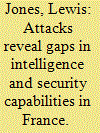

|
|
|
| 2 |
ID:
122864
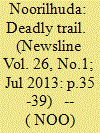

|
|
|
| 3 |
ID:
106514
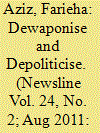

|
|
|
| 4 |
ID:
160313
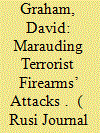

|
|
|
|
|
| Summary/Abstract |
Emotive scenes on television screens herald a new genre of increasingly frequent terrorist attacks. Events across the globe highlight the potential lethality of asymmetrical belligerents, either operating alone or as part of an organised team, causing carnage and widespread fatalities with firearms. With the increased likelihood of this type of attack in the UK, David Graham asks whether response plans are both appropriate and effective in their pre-planning in the view of professional emergency service commanders who will be responsible for dealing with these incidents.
|
|
|
|
|
|
|
|
|
|
|
|
|
|
|
|
| 5 |
ID:
087397
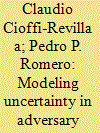

|
|
|
|
|
| Publication |
2009.
|
| Summary/Abstract |
Uncertainty is a hallmark of conflict behavior, and other forms of violence that accompany civil and international war-such as low-intensity warfare, guerrilla, insurgency, and asymmetric conflict-are no exception. This study applied the theory of political uncertainty and complexity theory to the analysis of conflict events during the first three years of the second Iraq war, 2003-2006, limited to the Diyala province. Findings show that neither the time between attacks T or the severity of attacks S (fatalities) have the "normal" (bell-shaped) or lognormal distribution that is characteristic of equilibrium systems. Instead, both variables showed heavy tails, symptomatic of non-equilibrium dynamics, in some cases approximating a power law with critical or near critical exponent value of 2. The empirical hazard force analysis in both cases showed that the intensity was high for the first epoch in both variables (March 2003 to June 2004) but even higher in the latter period from July 2004 to March 2006. Selected policy implications are discussed, including the possibility that real-time or near real-time analysis of the data analyzed through the uncertainty-complexity computational methods would have revealed the gathering momentum of adversarial attacks perhaps in time to have prevented the insurgency.
|
|
|
|
|
|
|
|
|
|
|
|
|
|
|
|
| 6 |
ID:
105979
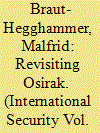

|
|
|
|
|
| Publication |
2011.
|
| Summary/Abstract |
Thirty years after the Israeli attack on the Osirak reactor in June 1981 the consequences for Iraq's nuclear weapons program remain hotly debated. A new history of this program, based on several new Iraqi sources, yields a net assessment of the impact of the Israeli attack that differs from prevailing accounts. The attack had mixed effects: it triggered a covert nuclear weapons program that did not previously exist, while necessitating a more difficult and time-consuming technical route to developing nuclear weapons. Notwithstanding gross inefficiencies in the ensuing program, a decade later Iraq stood on the threshold of a nuclear weapons capability. This case suggests that preventive attacks can increase the long-term proliferation risk posed by the targeted state.
|
|
|
|
|
|
|
|
|
|
|
|
|
|
|
|
| 7 |
ID:
106527


|
|
|